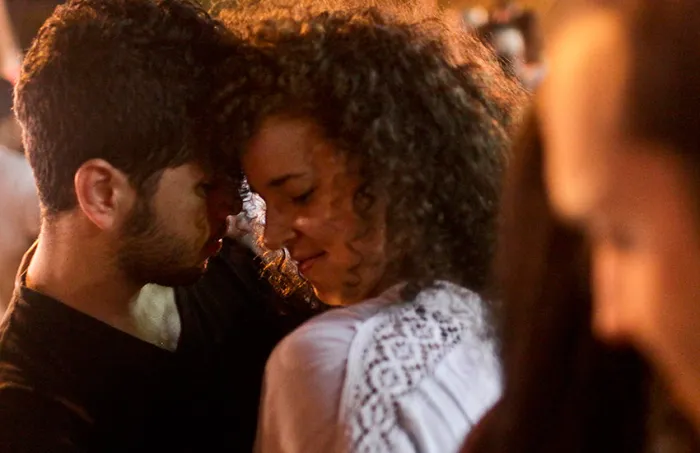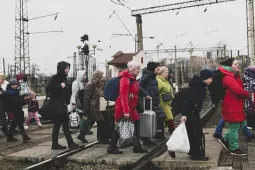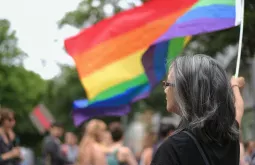Carnival fever

Shadia Cure, 28, has a dilemma. She needs a costume for the annual Barranquilla carnival, one of the biggest in the world. The theme for her costume for this year is ‘shout’. But she doesn’t know precisely what her costume is going to look like. In fact, she has no idea.
And in her halting English, pausing every now and then to find the right word, she describes her head gear (the only things she is certain about). It is elaborate, with many sides. But she is not sure what she would wear with it that will fully express her theme.
“I want to release some demons,” she says and laughs.
So she has been going about Barranquilla with her camera trying to capture images of total strangers screaming into her lens. She asks politely, always smiling. Although some think her request is odd and walk away, others agree and scream. The carnival spirit is rife in the air and people here are given to occasional eccentricities.
Preparations for the four-day event in February go on all year round and get into top gear from October. Everyone one, rich and poor, old and young participates, almost all 2 million residents of the Northern Colombian city.
For Shadia, this will be her third year participating in Barranquilla’s famous carnival, which coincides with the city’s 200th anniversary. Before she left to study Theatre and Dance in Buenos Aires, Argentina, she had merely been a spectator. But two years ago, she discovered a carnival group called Disfrazate Como Quiera, (Spanish for “Disguise as you wish”) which encourages radical thinking and liberties with costumes. In the organised insanity of the carnival, that has to be scary.
But Shadia found the group and its idea appealing. This year, she will not be left out, so she goes shopping for material for her costume at the bustling Carrera 44, accompanied by her sister Karilyn. Karilyn’s pre-carnival jitters are over already. She has settled for a simple Carlos Valderrama look as her gear for the costume.
“I have the wig already; all I need is to get the shirt.”
Valderrama was probably Colombia’s most recognised football star with his distinct mane of yellow, curly hair. Massive. It was the curls that inspired Karilyn. Her naturally curly hair, which she shares with her sister, has been made fun of in a light way by her friends so she decided to use the Valderrama look to get back at them. Simple for Karilyn. Not so for her sister.
The huge William Chams shop on Carrera 44, it is incredibly busy. Tens of people buzz in and out with a Christmas-eve-shopping frenzy. They walk the aisles and contemplate different fabrics with dreamy eyes seeing what they could make out of them. Many uniformed attendants buzz around, moving bales of fabrics, showing customers around, their smiles masking their tiredness.
Karilyn points Shadia in the direction of a fabric with golden flecks, almost like scales on a fish. Shadia’s eyes light up but dim immediately when one of the shop attendants tells her the price – USD140 per square meter.
Pretty expensive, even for Shadia who comes from the upscale part of Barranquilla.
“It is much cheaper Down Town,” she says. But she won’t go Down Town. “It’s too far.”
“It’s too insecure, too poor,” Karilyn offers. “Colombia is one of the most unequal countries in the world,” she explains as Shadia drives down the street to an open market besides the Estadio Romelio Martínez.
She, alongside Karilyn, walked the streets festooned with mementos of the carnival –colourful costumes, masks, buntings and fancy lights displayed on shop windows. Lots of vibrant colours. It is a huge market for carnival costumes and accessories. More shops are being set up even that late in the day as the sun sets over the Magdelena River.
Trust the Chinese. They have found ways to profit from this carnival on the other end of the world. They import somebrero vueltiao, traditional Colombian hats and symbols of the carnival, at far cheaper rates than the local hand-woven ones, made from the cana fleche, a cane native to the region.
“The artisans, they are not happy about this,” Shadia says.
Eventually, after sunset, she realises, she won’t find what she wants for her costume so she puts off shopping for the next day.
“They will bring more fabrics tomorrow,” she smiles.
Later that night, at Lunabril, a local bar in Barranquilla, Shadia’s group officially kicks off its’ pre-carnival celebrations with a party. The captain of the group, a French woman who has lived for almost a decade in Barranquilla, dressed in a Queen’s regalia with a tiara that has the Eiffel Tower as the crown jewel delivers a lively speech in Spanish just at the entrance of Lunabril. She charges onto the street, alongside a young man waving the group’s black flag, pursued only by the carnival spirits and the dance music from a live band. The party spills into the street.
Shadia turns up later, after the dancing and drinking had been going on for a while. She stands on one side, a canned drink in hand, smiling at people and exchanging pleasantries. She isn’t dancing.
“I am tired,” she says and smiles.
But she dances eventually, not much anyway.
Down town and mud bath
The next day, Shadia makes an astonishing decision. She is going Down Town to shop for costume materials. Her guide will be Magali Padoli, a 51 year old seamstress who will also make Shadia’s costume.
Magali is from the poor side of town, from a neighbourhood called La Luz where they celebrate their carnivals not with flowers but with mud. La Luz is far from where Barranquilla’s biggest carnival parade, the Battala de las Flores, or
“battle of flowers” takes place.
There is a happy and somewhat sad glow in Magali’s eyes as she recounts her experience in the mud pit.
“One year, during the carnival, the people in the barrio (neighbourhood) came to ask for money for drinks. I didn’t want to give them so I ran to my room and hid under the bed. They jumped the fence and caught me. They took me to the mud pit and hurled me inside,” she says laughing.
When she crawled out of the pit, they all danced around and slung mud at each other. In her voice, there was evident nostalgia as she recounts the only Battala de las Flores she had attended. She had to take a long bus ride to get there. She describes the grandeur, the colours and dances. But as she absorbed the ambience, her children cried through the night in her absence. So she decided never to leave them for the grand parade, and revel instead in the local carnival of La Luz.
Along with Shadia, whom she had known since she was a baby, they scour the huge market of Down Town looking for the perfect material for Shadia’s costume. They knock heads together, exchange ideas and laugh.
But unlike Shadia, Magali doesn’t have the luxury of spending days thinking of her costume. She uses remnants, pieces from the costume she makes for her customers to patch together something to wear. And when these are not enough, she wears her old cloths inside out and has her brother, an artist, paint something on them. Somehow she will always find a headgear. After all, she is very resourceful. She had sponsored some of her children to the university patching up dresses and costumes for others. In the process, patching together a life for herself. Shadia could afford to travel abroad for studies.
Decking the queen
At her vast residence, septuagenarian fashionista Amalin de Hazbun sits at her desk, taking phone calls and sipping coffee. She is a busy woman, and an important one too. She is called ‘The Golden Needle of Colombia’. She designs and makes costumes for the carnival Queens over the years and other Barranquilla and Colombian elites. Framed pictures of the carnival and Pageant Queens she had dressed blotch the many walls of her house. In several rooms, workers are busy trying to put finishing touches to some grand costume or the other.
“Making costumes is very, very important to me,” she says. “It is the most important work for me because it represents my people, our culture and everything we stand for.”
Everyone in Barranquilla, from the lowest to the highest, is involved in this carnival. Their lives revolve around it and some of them like Amalin work all year round. Shadia would be happy to have this celebrity designer make her costume but she smiles and shakes her head. “Ah! She will be too expensive.”
Three days of searching have yielded no result for Shadia. Standing outside yet another shop besides the market, she shrugs with a wry smile and says, “It is hard for me to make a decision. I hate having to make a choice. It is like punishment for me.”
Night Parties
The pre-carnival fever is now officially in full swing. All the major clubs in Barranquilla are officially flagging off their parades. The Danza del Garrabato holds at the high end of town and is graced by this year’s Carnival Queen, Daniella Cepeda. She arrives in a grand fashion, dancing vigorously and waving to the multitudes lining the street. Her entourage is grand, made up of the police, military and fire fighters marching to the wails of sirens. Behind her, an incredibly long carnival train of dancers dressed in glittering black consumes trimmed with red, yellow and green ribbons, the colours of Barranquilla, flow.
But in La Luz, where Magali Padali lives, the neighbourhood pre-carnival party is merely a fund raiser for the carnival. Proceeds from food sales go into the coffers of the neighbourhood carnival proper, where a local queen will be chosen for her dancing skills. She will be crowned by the overall queen, who will arrive yet again in a grand carnival train. The queen of La Luz, which ironically means The Light, will have only a bicycle drawn rickshaw for her parade.
Shadia Cure, who, in trying to shout out her demons, and having ironically captured strangers’ and friends’ shouts in her camera in the process, has finally decided, after four days, to dress as a croissant instead. For now, her search begins again, for materials to make a croissant costume. But there is no telling if she might change her mind yet again.






